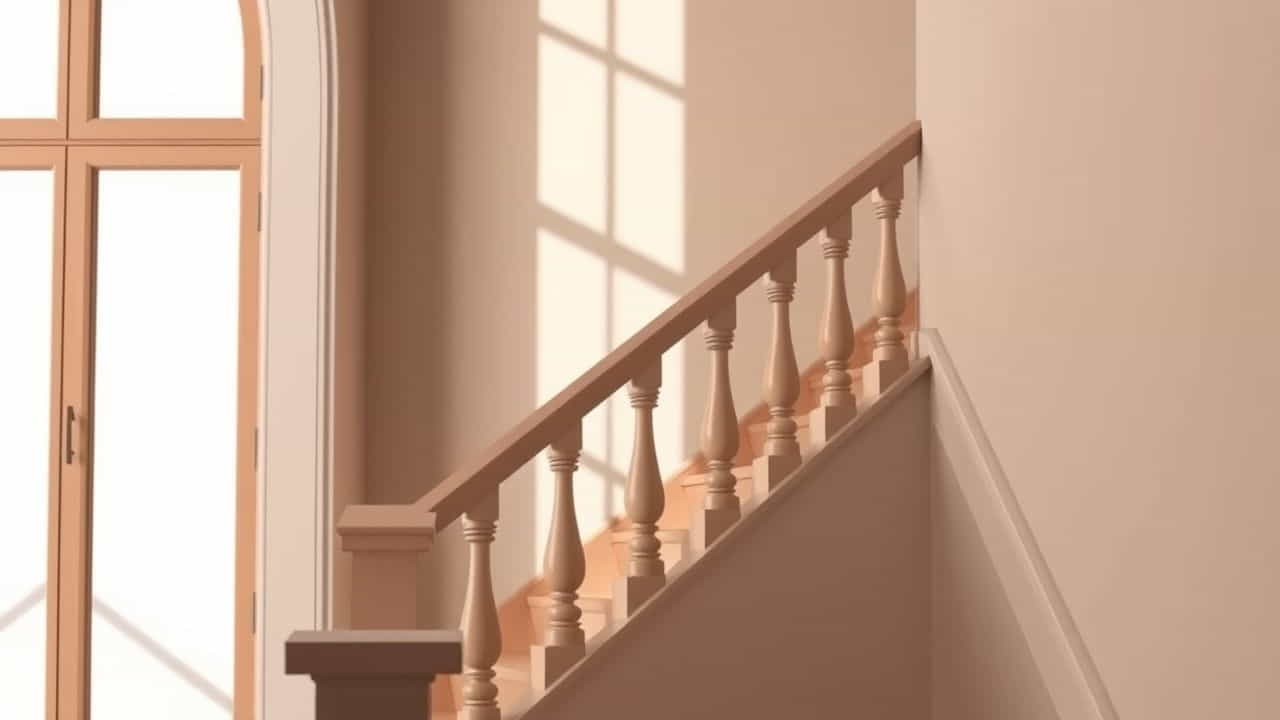A baluster is a vertical post or spindle that supports the handrail of a staircase. It plays both a structural and decorative role, ensuring safety while adding aesthetic appeal to staircases in homes, offices, and public buildings. Balusters are often seen in traditional wooden staircases, modern glass railings, and ornate wrought iron designs.
Understanding the function, materials, styles, and installation of balusters can help homeowners and builders choose the best option for their staircase design.
1. Understanding the Role of Balusters
1.1. What Is a Baluster?
A baluster is a small, vertical post that connects the tread (step) of a staircase to the handrail. Multiple balusters are installed in a row to form a balustrade, providing support and safety while preventing falls.
1.2. Purpose of Balusters in Staircases
Balusters serve several important functions:
-
Safety – Prevents people, especially children and pets, from falling off the staircase.
-
Support – Helps hold the handrail in place, ensuring a sturdy and stable railing.
-
Aesthetic Appeal – Enhances the staircase design, adding elegance and style to a space.
-
Structural Integrity – Distributes weight evenly along the railing system.
2. Parts of a Baluster System
2.1. Handrail
The top horizontal part of the staircase that people hold onto for support.
2.2. Tread and Riser
-
Tread – The horizontal surface of the step where you place your foot.
-
Riser – The vertical part between two steps.
2.3. Balustrade
A series of balusters connected to a handrail, forming the protective barrier of a staircase.
2.4. Newel Post
A larger, thicker post at the beginning and end of a staircase that provides additional support to the railing system.
3. Types of Balusters
Balusters come in a variety of materials and styles, depending on the architectural design of the space.
3.1. Wooden Balusters
Wooden balusters are traditional and commonly used in classic and rustic staircase designs. They can be:
-
Turned balusters – Featuring intricate carvings for a vintage look.
-
Square balusters – Simple, straight-cut designs for a modern feel.
3.2. Metal Balusters
Metal balusters, usually made of wrought iron, steel, or aluminum, offer a contemporary and elegant touch. Popular styles include:
-
Twisted designs – Adding an artistic flair.
-
Geometric patterns – Creating a sleek, modern appearance.
3.3. Glass Balusters
For a minimalist and open-concept look, glass balusters are an excellent choice. They allow unobstructed views and enhance natural lighting.
3.4. Stone Balusters
Used in luxury homes and historical buildings, stone balusters are often carved from marble, granite, or limestone.
4. Choosing the Right Baluster for Your Staircase
4.1. Consider the Style of Your Home
-
Traditional Homes – Opt for wood or wrought iron balusters with decorative elements.
-
Modern Homes – Choose glass, metal, or simple wooden balusters with clean lines.
4.2. Safety Regulations
-
Baluster spacing should be no more than 4 inches apart to prevent children from slipping through.
-
Handrails should be at a comfortable height for support.
4.3. Durability and Maintenance
-
Wood requires regular maintenance to prevent warping.
-
Metal is highly durable but may rust if not coated properly.
-
Glass needs frequent cleaning to maintain clarity.
5. Installing Balusters in a Staircase
5.1. Measuring and Planning
-
Determine the number of balusters needed based on the length of the staircase.
-
Mark the placement of each baluster to ensure even spacing.
5.2. Attaching the Balusters
-
For wooden balusters, use wood glue and nails to secure them to the stair tread and handrail.
-
For metal balusters, drill holes and use screws or welding for a strong connection.
-
For glass balusters, install stainless steel clamps to hold the panels in place.
5.3. Finishing Touches
-
Apply stain or paint to wooden balusters for a polished look.
-
Use protective coatings on metal balusters to prevent rust.
6. Maintaining Balusters for Longevity
6.1. Regular Cleaning
-
Wood – Wipe with a damp cloth and apply wood polish.
-
Metal – Use mild soap and water to remove dust and debris.
-
Glass – Clean with a glass cleaner to remove fingerprints and smudges.
6.2. Checking for Damage
-
Inspect balusters for loose fittings or cracks.
-
Repair or replace damaged balusters to maintain safety.
6.3. Refinishing When Necessary
-
Wooden balusters may require repainting or staining every few years.
-
Metal balusters should be recoated to prevent rusting.
Balusters are an essential part of staircase design, providing safety, support, and aesthetic value. Whether you choose wood, metal, glass, or stone balusters, selecting the right style can transform the look of your home. Proper installation and maintenance ensure that balusters remain durable and visually appealing for years to come.
By understanding their purpose, types, and design options, homeowners can make informed decisions when building or renovating a staircase.
